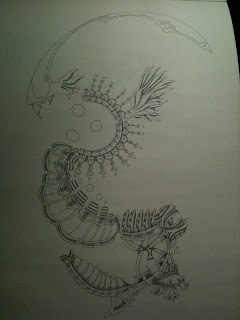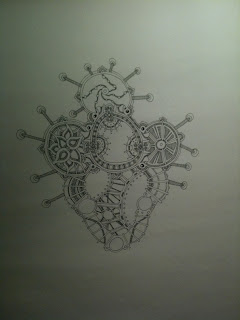I've done tattoo designs before, but it's never been something I've ever been especially serious about. But work at the cafe has me thinking more about where art and environment meet, and what that looks like. I live in a city, I work in a city. I'm finding myself interested in shifting away from ink drawings and more towards projects that reflect the essence of Philly and what life on the street is about. Namely, tattoos, graffiti and found art sculpture. I've been thinking more and more about "street art" (Philly's got thousands of murals, mosaics) and am increasingly tempted to roam streets late at night with paint.
In the meantime, this is the first draft of a tattoo for Pedro, a coworker at the cafe. The finished product is going to cover his arm between the two tattoos he already has and will include numerous influences from puerto rico, where his family is originally from. Keep checking in to see how the drawing evolves, and how it turns out as a tattoo.
































